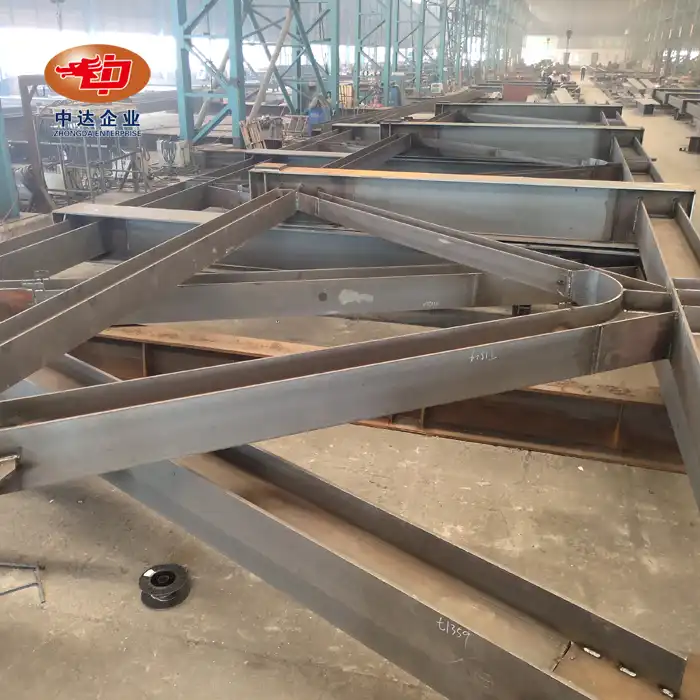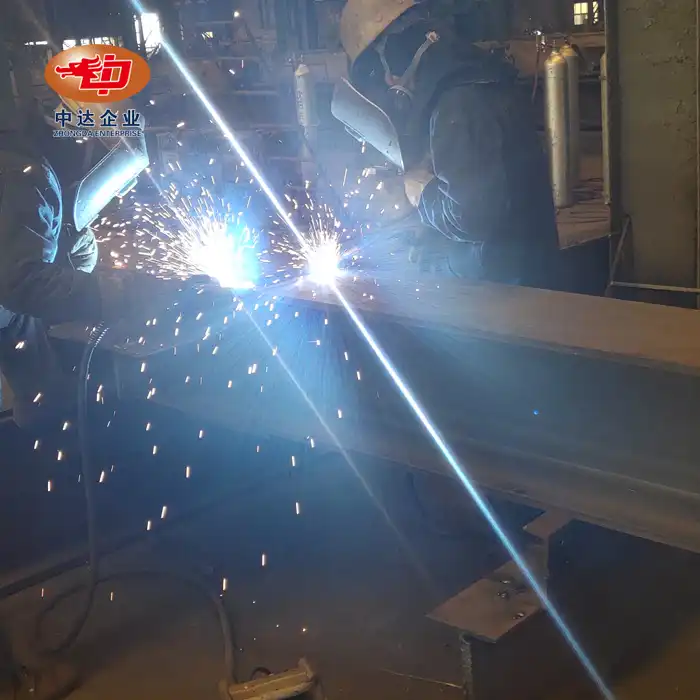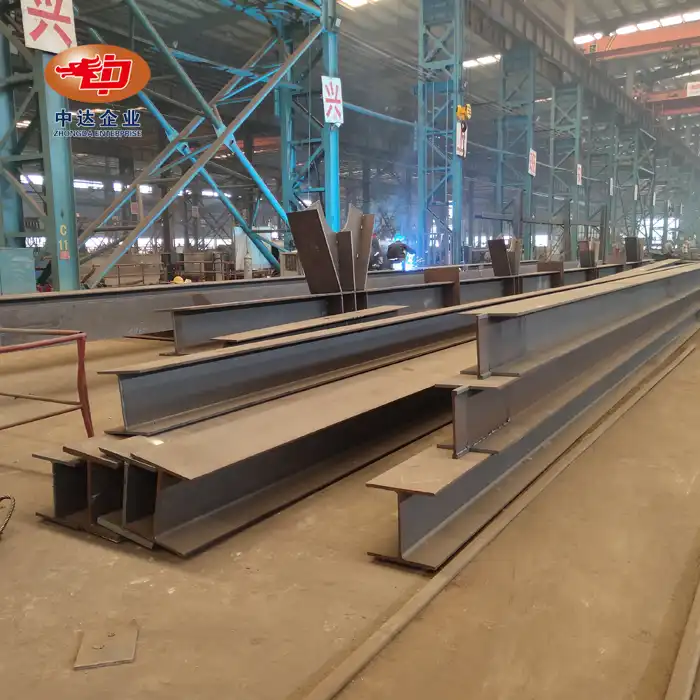
How to Ensure Durability of Steel-Concrete Composite Beams in Humid and Seismic Conditions?
Ensuring the durability of steel-concrete composite beams in humid and seismic conditions requires a multifaceted approach. Key strategies include selecting corrosion-resistant materials like galvanized or epoxy-coated steel, incorporating fly ash in concrete mixtures to enhance carbonation resistance, and implementing advanced seismic design techniques such as the "dual seismic resistance system." By combining these methods with innovative technologies like BIM-driven prefabrication and ultra-precise plate cutting, as offered by industry leaders like Zhongda Steel, engineers can create robust structures capable of withstanding harsh environments and seismic events while maintaining high load-bearing capacity and deformation ability.
Material Selection and Treatment for Humid Environments
Corrosion-Resistant Steel Options
In humid environments, the choice of steel is crucial for the longevity of composite beams. Galvanized steel and epoxy-coated steel are excellent options due to their enhanced corrosion resistance. Galvanization involves coating steel with a layer of zinc, which acts as a sacrificial anode, protecting the underlying steel from corrosion. Epoxy coatings, on the other hand, provide a physical barrier against moisture and corrosive agents.
Zhongda Steel's expertise in -60°C Weathering Steel Anti-corrosion Technology is particularly relevant here, offering superior protection even in extreme conditions. This innovative approach ensures that steel components maintain their structural integrity for extended periods, even when exposed to high humidity levels.
Concrete Mixture Optimization
The concrete component of composite beams also plays a vital role in durability. Incorporating supplementary cementitious materials like fly ash into the concrete mixture can significantly enhance its resistance to carbonation and chloride penetration. These additives not only improve the concrete's durability but also contribute to its overall strength and workability.
Moreover, the use of high-performance concrete with low water-to-cement ratios can further improve the beam's resistance to moisture ingress and chemical attack. This is particularly important in humid environments where water is a constant threat to the structure's integrity.
Surface Treatments and Coatings
Beyond material selection, surface treatments can provide an additional layer of protection. For a steel-concrete composite beam, applying hydrophobic sealers or waterproof membranes to the concrete surface can significantly reduce water absorption, thereby minimizing the risk of reinforcement corrosion and concrete degradation.

For the steel components, advanced coating systems such as zinc-rich primers followed by epoxy intermediate coats and polyurethane topcoats can offer comprehensive protection against humidity and other environmental factors. These multi-layer systems provide both barrier and galvanic protection, ensuring long-term durability in challenging environments.
Seismic Design Strategies for Composite Beams
Dual Seismic Resistance System
The implementation of a "dual seismic resistance system" is a cutting-edge approach to enhancing the earthquake resilience of steel-concrete composite structures. This system typically combines a steel frame with a reinforced concrete core, leveraging the strengths of both materials to create a highly resilient structure.
In this configuration, the steel frame provides ductility and energy dissipation capacity, while the concrete core offers stiffness and stability. The synergy between these components results in a structure that can effectively resist seismic loads while maintaining its integrity under severe ground motions.
Optimization of Beam-Column Connections
The performance of steel-concrete composite beams during seismic events heavily depends on the design of beam-column connections. Advanced modeling techniques, such as the strut-and-tie model and the softened truss model, can be employed to optimize these critical junctions.
These models allow engineers to predict and enhance the load transfer mechanisms within the connection, ensuring efficient stress distribution and minimizing the risk of brittle failure. By incorporating these advanced design methodologies, structures can maintain high load-bearing capacity and deformation ability even in severe seismic conditions.
Energy Dissipation Mechanisms
Incorporating energy dissipation mechanisms into the design of composite beams can significantly improve their seismic performance. This can include the use of yielding dampers, friction dampers, or viscoelastic dampers strategically placed within the structure.
These devices help absorb and dissipate seismic energy, reducing the demands on the primary structural elements. By integrating such mechanisms, the overall ductility and energy absorption capacity of the composite beam system can be substantially enhanced, leading to improved performance during earthquakes.
Innovative Technologies for Enhanced Durability
BIM-Driven Prefabrication
Building Information Modeling (BIM) technology, a specialty of Zhongda Steel, offers significant advantages in ensuring the durability of steel-concrete composite beams. BIM allows for precise planning and coordination of all structural elements, minimizing errors and optimizing the integration of steel and concrete components.
Through BIM-driven prefabrication, components can be manufactured under controlled conditions, ensuring higher quality and tighter tolerances. This approach not only improves the overall durability of the structure but also facilitates faster on-site assembly, reducing exposure to potentially damaging environmental conditions during construction.

Ultra-Precise Plate Cutting
Zhongda Steel's capability in ultra-thick plate cutting with precision of ±0.2mm is a game-changer in composite beam construction. This level of precision ensures perfect fit between steel components, minimizing gaps and potential weak points in the structure.
Precise cutting also allows for optimal design of connection points between steel and concrete elements, enhancing load transfer and overall structural integrity. This precision contributes significantly to the durability and seismic performance of composite beams by ensuring that each component functions exactly as designed.
Advanced Monitoring and Maintenance Strategies
Ensuring long-term durability goes beyond initial design and construction. Implementing advanced monitoring systems can provide real-time data on the structure's performance and condition. Sensors embedded within the composite beams can detect early signs of corrosion, concrete degradation, or changes in structural behavior.
This data-driven approach allows for proactive maintenance strategies, addressing potential issues before they escalate into major problems. Regular inspections, coupled with targeted maintenance based on monitoring data, can significantly extend the lifespan of composite beams in challenging environments.
Conclusion
Ensuring the durability of steel-concrete composite beams in humid and seismic conditions demands a comprehensive approach. By combining corrosion-resistant materials, optimized concrete mixtures, advanced seismic design techniques, and cutting-edge technologies, engineers can create structures that withstand the test of time and nature. The integration of BIM-driven prefabrication and ultra-precise manufacturing, as exemplified by Zhongda Steel's capabilities, further enhances the reliability and performance of these critical structural elements. As we continue to push the boundaries of structural engineering, these innovative approaches pave the way for more resilient and sustainable infrastructure worldwide.
Contact Us
For expert guidance on implementing these durability-enhancing strategies in your seismic-resistant steel-concrete composite beam projects, reach out to Zhongda Steel. Our team of specialists can provide tailored solutions leveraging our advanced technologies and global experience. Contact us at Ava@zd-steels.com to explore how we can elevate your structural designs to new heights of durability and performance.
References
Johnson, R.P. (2018). Composite Structures of Steel and Concrete: Beams, Slabs, Columns and Frames for Buildings. Wiley-Blackwell.
Nie, J., & Tao, M. (2020). Seismic Behavior of Steel-Concrete Composite Structures. Elsevier.
Shi, G., & Lam, D. (2019). Durability of Steel and Concrete Composite Structures. Institution of Civil Engineers.
Oehlers, D.J., & Bradford, M.A. (2015). Composite Steel and Concrete Structural Members: Fundamental Behaviour. Pergamon.
Wang, Y.C. (2018). Steel and Composite Structures: Behaviour and Design for Fire Safety. CRC Press.
Nethercot, D.A. (2017). Composite Construction. Spon Press.













